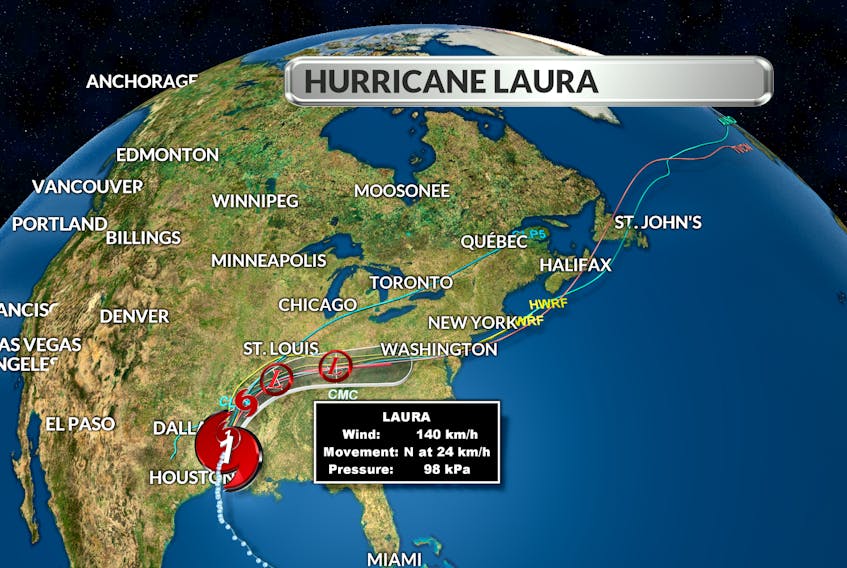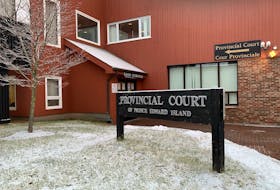Not with a bang but a whimper.
That will be hurricane Laura’s approach to Nova Scotia and the rest of Atlantic Canada early Saturday morning.
“The system is going to bring us some moisture this weekend,” said Saltwire meteorologist Cindy Day.
“It’s not going to be a tropical storm that reaches us because of what it has to do before it gets here. There is a big high sitting off the Eastern Seaboard and it has to go up and over that so this storm, Laura, that is still a Category 2 (as of late Thursday morning) has to spend a lot of time over land.
Listen to "Laura's effects on Atlantic Canada" on Spreaker.
“So, it is not going to be feeding and re-intensifying right away. Then it looks like it’s going to swing off the coast somewhere near Cape Cod and it’s going to pick up some energy from two other systems that are crossing the Great Lakes.”

Day said there will be a limited amount of tropical energy left in the phased system that will become a rain event as it passes through northern Nova Scotia and tracks across to Newfoundland and Labrador.
Laura made landfall as a Category 4 storm, packing winds of 240 kilometres per hour, in the small town of Cameron, La., near the Texas border early Thursday morning.
The U.S. National Weather Service warned of “unsurvivable” storm surges that could potentially be higher than a two-storey house.
But Laura’s ferocity will not reach Atlantic Canada.
“It’s going to impact everybody,” Day said of the rainfall expected.
“The rain will start over the extreme southwest corner of Nova Scotia, probably fairly early in the day Saturday, initially as showers, with the showers building toward Halifax on Saturday afternoon and then reaching Cape Breton on Saturday evening and Newfoundland after midnight and into Sunday morning,” Day said.
“The heaviest rain will come from, in the Maritimes, overnight Saturday and into midday Sunday. For Newfoundland, it will be a Sunday event.”
Day forecasts 40 to 50 millimetres of rain for Prince Edward Island, 50 to 60 millimetres and some pockets of 70 millimetres for mainland Nova Scotia and Cape Breton.
“Not much of a wind event,” Day said. “It’s southeast winds, gusting to 40 kilometres per hour, so some wind but no tropical storm force winds.”
No need even to tie down or bring in patio furniture and lawn ornaments because there is no risk that they will blow into a neighbour's yard.
“It will be no more windy than it is this (Thursday) morning,” Day said.
Day said Laura gained its power by stealing much of the energy from tropical storm Marco, which weakened to a tropical depression almost two days before Laura made landfall.
More than 290,000 homes and businesses were without power in Louisiana and Texas Thursday morning, with their only light source coming from relentless lightning.
Nearly 600,000 coastal residents there were ordered to join the largest evacuation since the coronavirus began and many did. But in Cameron Parish in Louisiana, where the hurricane came ashore, officials reported that at least 150 people refused to leave and planned to weather the storm in homes and recreational vehicles.
The result could be catastrophic because the parish was forecast to potentially be completely covered by ocean water.
Get the latest weather from SaltWire chief meteorologist Cindy Day









